
A wargame is a strategy game in which two or more players command opposing armed forces in a realistic simulation of an armed conflict. Wargaming may be played for recreation, to train military officers in the art of strategic thinking, or to study the nature of potential conflicts. Many wargames recreate specific historic battles, and can cover either whole wars, or any campaigns, battles, or lower-level engagements within them. Many simulate land combat, but there are wargames for naval and air combat as well.

The Ancient Art of War is a video game designed by Dave and Barry Murry, developed by Evryware, and published by Broderbund in 1984. It is recognized as one of the first real-time strategy or real-time tactics games.
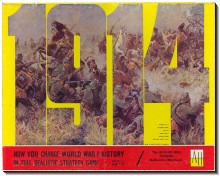
1914 is a board wargame published by Avalon Hill in 1968 that simulates the first few months of World War I on the Western Front.

The Charles S. Roberts Awards is an annual award for excellence in the historical wargaming hobby. It was named in honor of Charles S. Roberts the "Father of Wargaming" who founded Avalon Hill. The award is informally called a "Charlie" and officially called a "Charles S. Roberts Award". The Wargamer magazine called it "very prestigious". The Award is managed by the Charles S. Roberts Award Committee which has no commercial sponsorship, made up of designers, writers and hobbyists. It is a "people's award" with winners chosen through votes submitted by fans.
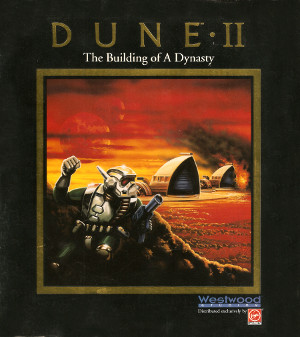
Dune II: The Building of a Dynasty is a real-time strategy Dune video game developed by Westwood Studios and released by Virgin Games in December 1992. It is based upon David Lynch's 1984 film Dune, an adaptation of Frank Herbert's science fiction novel of the same name.

Eastern Front (1941) is a computer wargame for the Atari 8-bit family created by Chris Crawford and published through the Atari Program Exchange (APX) in 1981. A scenario editor and assembly language source code for the game were also sold by APX as separate products.
Turn-based tactics (TBT) is a video game genre of strategy video games. They are turn-based simulations of operational warfare and military tactics in generally small-scale confrontations as opposed to more strategic considerations of turn-based strategy (TBS) games. Turn-based tactical gameplay is characterized by the expectation of players to complete their tasks using only the combat forces provided to them in a generally realistic manner.
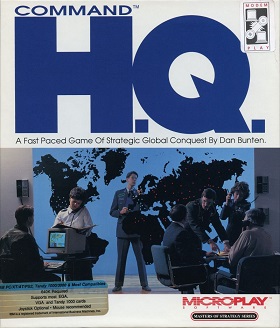
Command HQ is a real-time strategy world domination game. It was released in 1990 by Microplay Software and was created by designer Danielle Bunten.
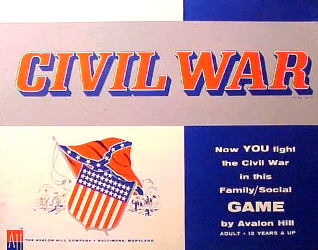
Civil War is an early strategic board wargame published by Avalon Hill in 1961 that simulates the American Civil War. Unlike other games produced by Avalon Hill during this period such as Gettysburg, Civil War did not sell well and was dropped from production two years later.

Battle Isle is a series of turn-based strategy/tactics video games developed in the 1990s by Blue Byte and released for Amiga and MS-DOS and later for Microsoft Windows. The settings are wars on a fictional planet, Chromos.

Empire is a 1977 turn-based wargame with simple rules. The game was conceived by Walter Bright starting in 1971, based on various war movies and board games, notably Battle of Britain and Risk. The game was ported to many platforms in the 1970s and 1980s. Several commercial versions were also released, often adding basic graphics to the originally text-based user interface. The basic gameplay is strongly reminiscent of several later games, notably Civilization, which was partly inspired by Empire.

Legionnaire is a computer wargame for the Atari 8-bit series created by Chris Crawford in 1982, and released through Avalon Hill. Recreating Julius Caesar's campaigns in a semi-historical setting, the player takes command of the Roman legions in real-time battles against the barbarians.
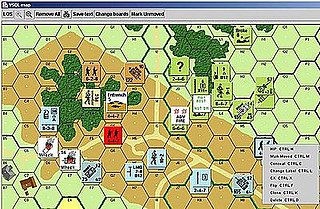
A computer wargame is a wargame played on a digital device. Descended from board wargaming, it simulates military conflict at the tactical, operational or strategic level. Computer wargames are both sold commercially for recreational use and, in some cases, used for military purposes.

Dan Bunten's Modem Wars is a real-time tactics game developed by Ozark Softscape and published by Electronic Arts in 1988 for the Commodore 64. A version for IBM PC compatibles was released in 1989.
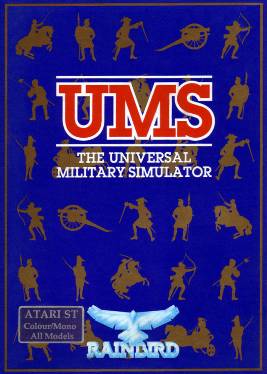
The Universal Military Simulator is a computer game developed by Rainbird Software in 1987 for the Macintosh, Tandy 4000, and IBM PC compatibles. In 1988, both Atari ST, Amiga versions were released. The game was created by Ezra Sidran. The PC and Amiga versions were ported by Ed Isenberg. The game spawned two sequels: UMS II: Nations at War and The War College: Universal Military Simulator 3.
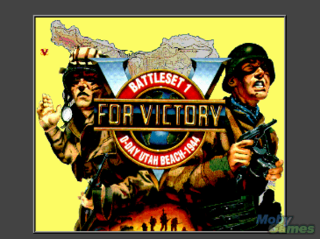
V for Victory: D-Day Utah Beach is a 1991 computer wargame developed by Atomic Games and published by Three-Sixty Pacific. It was widely lauded and repeatedly reviewed as the best wargame of its era. Its success led to three further games in the V for Victory series, and then the similar World at War series published by Avalon Hill.
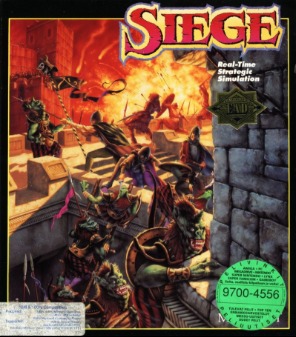
Siege is a video game released by Mindcraft in 1992 for MS-DOS. An expansion pack, Dogs of War, was released. It added multiplayer, six new castles, and 16 new units to the game. A sequel, Ambush at Sorinor, was released in 1993.
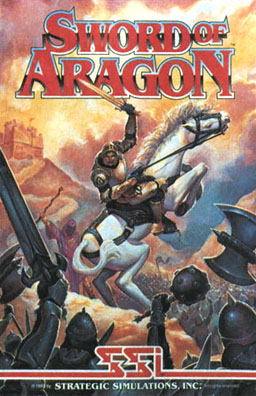
Sword of Aragon is a turn-based strategy and role-playing game developed and published by Strategic Simulations in 1989. It is also considered to be of the 4X genre. Set in the fictional land of Aragon, the games casts its protagonist as the duke of a city named Aladda. After assuming rule over the city and avenging his father's death, the protagonist embarks on a quest to unify the land through conquest. Accomplishing this goal entails developing cities, recruiting armies, and directing the troops on the fields of battle to victory. First published for MS-DOS, the game was ported to Amiga machines. Reception towards Sword of Aragon tended to be more positive than negative; reviewers called it an exciting game, but criticized its method of copy protection and cited problems with its documentation. There were also opinions that the game was more of a niche product, catering to hardcore strategists.

Battle Isle 2200 is a strategy video game developed by Blue Byte for IBM PC compatibles and published by Accolade in 1994. It is the second entry in the science fiction themed Battle Isle series. The game is a turn-based, hex-based, strategy wargame. An expansion was released the same year.
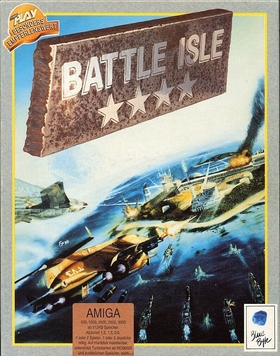
Battle Isle is a 1991 turn-based strategy video game developed by Blue Byte and published by Ubi Soft for the Amiga and MS-DOS. It is the first game in the Battle Isle series. Two official expansion packs were released: Data Disk I in 1992 and The Moon of Chromos in 1993. An unofficial expansion, Battle Field Creator, was released in 1994. An Atari ST version was advertised but never released.





















